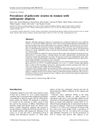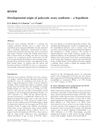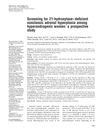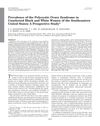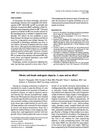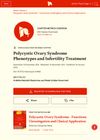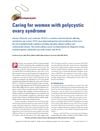Definitions, Prevalence, and Symptoms of Polycystic Ovaries and Polycystic Ovary Syndrome
August 2004
in “
Best Practice & Research in Clinical Obstetrics & Gynaecology
”

TLDR Polycystic ovaries are defined by having 12 or more small follicles in each ovary and are found in up to 33% of women, while Polycystic Ovary Syndrome (PCOS) is the most common hormone disorder in women of reproductive age, potentially increasing risk of obesity, diabetes, and heart diseases.
The document from 18 years ago discussed the definitions, prevalence, and symptoms of polycystic ovaries and polycystic ovary syndrome (PCOS). Polycystic ovaries were defined by the presence of 12 or more follicles in each ovary, each measuring 2–9 mm in diameter, and/or increased ovarian volume (>10 ml). The prevalence of PCOS was difficult to determine due to varying diagnostic criteria, but the incidental finding of polycystic ovaries at the time of ultrasound examination was relatively frequent, occurring in up to 33% of women, with most studies reporting an incidence around 22% in an unselected population. In a study of 173 symptomatic women, the ultrasonographic appearance of polycystic ovaries was noted. Women with polycystic ovaries and no other features of PCOS were regarded as asymptomatic. PCOS was considered the most common endocrine disorder of women in their reproductive years, with implications including increased risk of obesity, diabetes, death after a myocardial event, and potentially other cardiovascular diseases. The condition was believed to originate in early childhood or even fetal life, potentially due to excessive androgen exposure.
